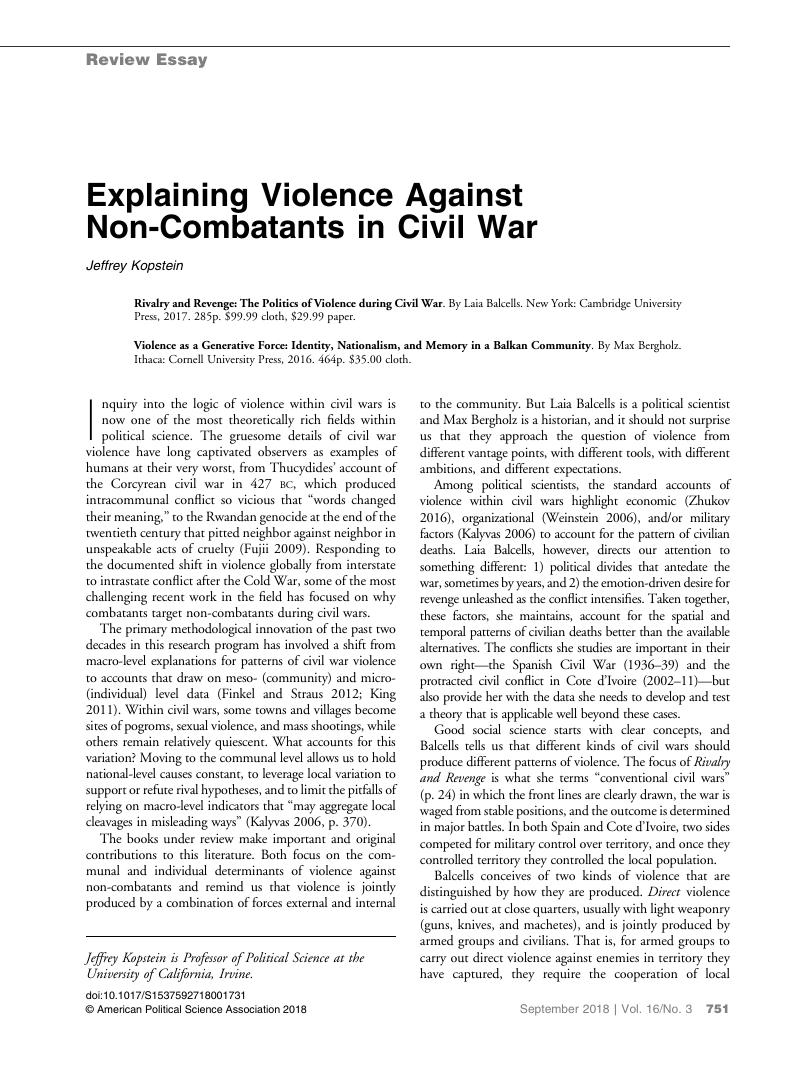No CrossRef data available.
Article contents
Explaining Violence Against Non-Combatants in Civil War
Published online by Cambridge University Press: 21 August 2018
Abstract
An abstract is not available for this content so a preview has been provided. Please use the Get access link above for information on how to access this content.

- Type
- Review Essay
- Information
- Copyright
- Copyright © American Political Science Association 2018
References
Fearon, James D. 2004. “Why Do Some Civil Wars Last So Much Longer Than Others?” Journal of Peace Research, 41(3): 275–301.CrossRefGoogle Scholar
Finkel, Evgeny and Straus, Scott. 2012. “Macro, Meso, and Micro Research on Genocide: Gains, Shortcomings and Future Areas of Inquiry.” Genocide Studies and Prevention, 7(1): 56–67.CrossRefGoogle Scholar
Fujii, Lee Ann. 2009. Killing Neighbors: Webs of Violence in Rwanda. Ithaca, NY: Cornell University Press.Google Scholar
Kalyvas, Stathis. 2006. The Logic of Violence in Civil War. Cambridge: Cambridge University Press.CrossRefGoogle Scholar
King, Charles. 2011. “The Micropolitics of Social Violence.” World Politics, 56(3): 431–55.CrossRefGoogle Scholar
Weinstein, Jeremy. 2006. Inside Rebellion: The Politics of Insurgent Violence. Cambridge: Cambridge University Press.CrossRefGoogle Scholar
Zhukov, Yuri. 2016. “Trading Hardhats for Combat Helmets: The Economics of Rebellion in Eastern Ukraine.” Journal of Comparative Economics, 44(1): 1–15.CrossRefGoogle Scholar


